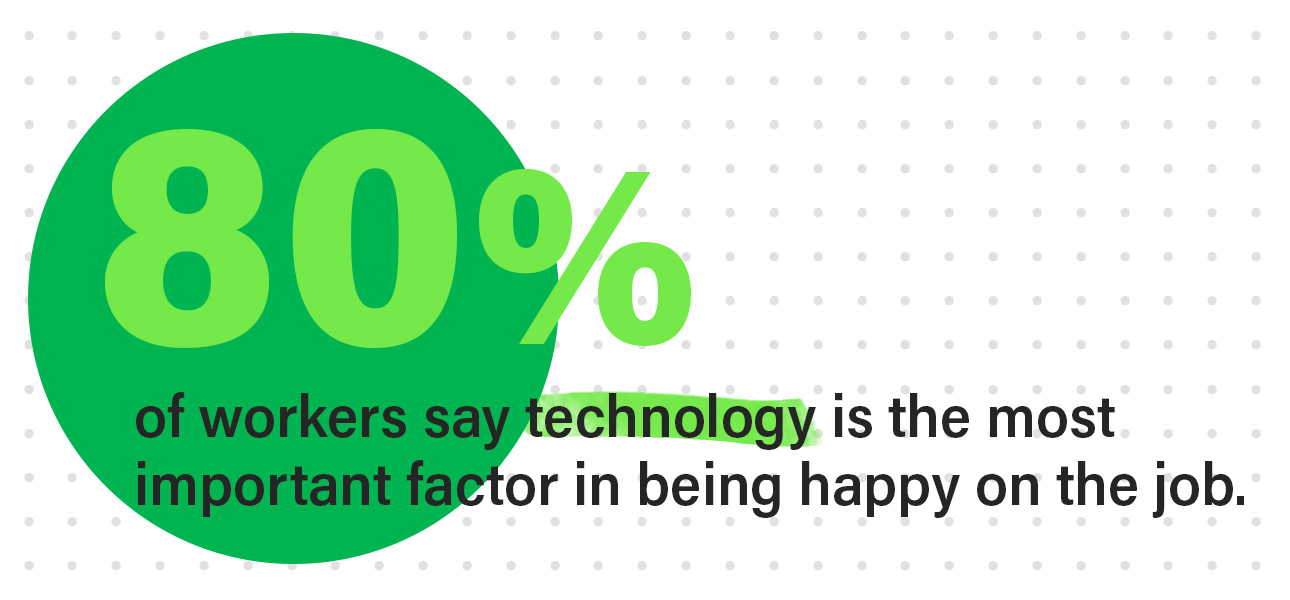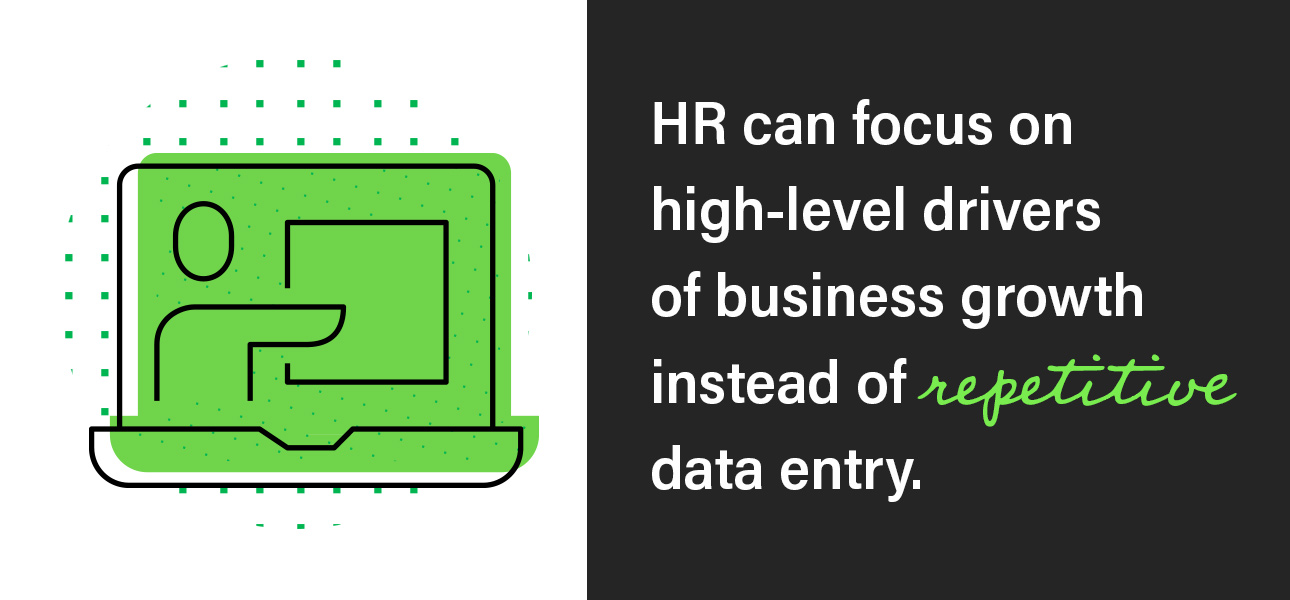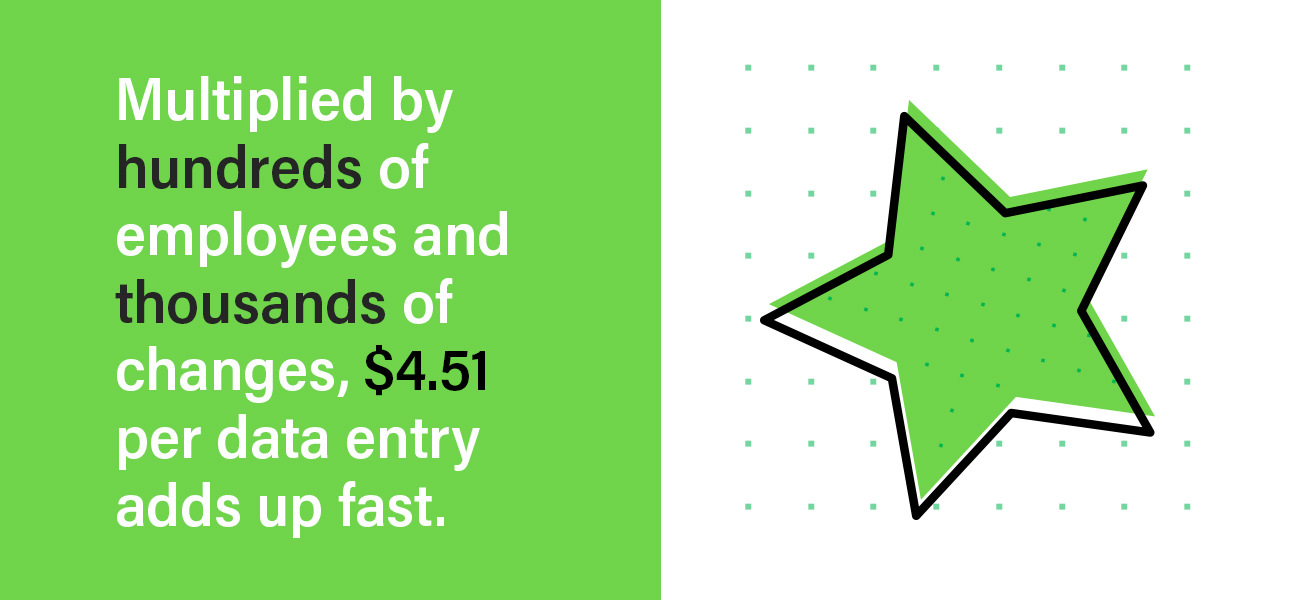In a December 2023 updated report, Ernst & Young (EY) found the average cost per manual data entry made by an HR professional increased to $4.78. Read about EY’s latest findings for more information.
Americans are online an average of seven hours per day – using mobile devices to communicate, order coffee, check bank balances and more, according to 2019 Global Digital reports. Thanks to ever-changing technology, we’ve come to expect direct access to our personal data and important information in all areas of our daily lives.
Then we go to work, where technological advancements have seemingly traveled back in time 20 years. This unfortunate reality has a detrimental effect on engaging employees, attracting top talent and driving performance in businesses.
Workers are frustrated because they can’t easily retrieve or manage their personal information in the same way that they do outside of the office. And HR is mired in manual administrative tasks that steal precious time from strategic initiatives, such as recruiting and talent development.
What’s the solution?
It’s time invest in new technology that puts control of HR data into the hands of our employees. Because the digital transformation isn’t coming – it’s here.

The benefits of employee usage
Research from Adobe revealed that more than 80% of workers say technology is the most important factor in being happy on the job, and that includes HR tech.
Employee self-service systems give personnel 24/7 access to their personal data. Instead of using HR as a middleman to update direct-deposit information, enroll in benefits or submit expenses, employees should have the freedom to complete those tasks themselves. This can significantly reduce data-entry errors while giving your workforce what they want: individual control and leading technology.
Additionally, self-service software can facilitate a host of other administrative duties, including onboarding, training, time tracking, employee surveys and performance management, just to name a few.
When these processes are automated, positive results ripple through an organization. HR is liberated to focus on high-level drivers of business growth instead of repetitive data entry. And employees have a better HR experience, which has been shown to increase engagement and productivity, according to the Society for Human Resource Management.
But just how much does a lack of tech impact the bottom line?

The cost of manual processes
High turnover and disengaged employees are expensive. Gallup estimates they cost businesses billions of dollars each year. Manual processes contribute to employee dissatisfaction and they, too, come with a high price tag.
A recent Ernst & Young study found that, on average, a single HR task or entry of data without self-service functionality costs a company $4.51.
This may sound insignificant since it’s about the same price as a latte. But when multiplied by hundreds of employees and thousands of changes across an HRIS, that number quickly accumulates in a big way.
So how do HR professionals truly analyze, and more importantly report on, the current cost of their dated HR processes or how better use of their technology can positively impact profitability?

The results of self-service technology
With the help of the Ernst & Young figures, Paycom created a tool called Direct Data Exchange®, which allows companies to see exactly how effectively their employees are using HR tech, and provides a real-time ROI on that usage.
For the first time, HR can see any and all changes made in the system and whether or not the adjustment was made by the employee through Employee Self-Service®, or at the client administrator or manager level. These insights are especially useful when looking at high-activity periods, like open enrollment and year-end.
This industry-first product is transforming the way HR operates by providing a clear look into the efficiencies or gaps within an employee usage strategy, and how that affects the company’s profitability. Additionally, HR can definitively demonstrate how engaged employees are in the HRIS technology provided to them.
Keeping employees happy, being a strategic business partner and leading a digital transformation simultaneously is no easy feat. But new HR technologies, arming you with quantitative data proving the value of your investment, can put you on the path to success.

